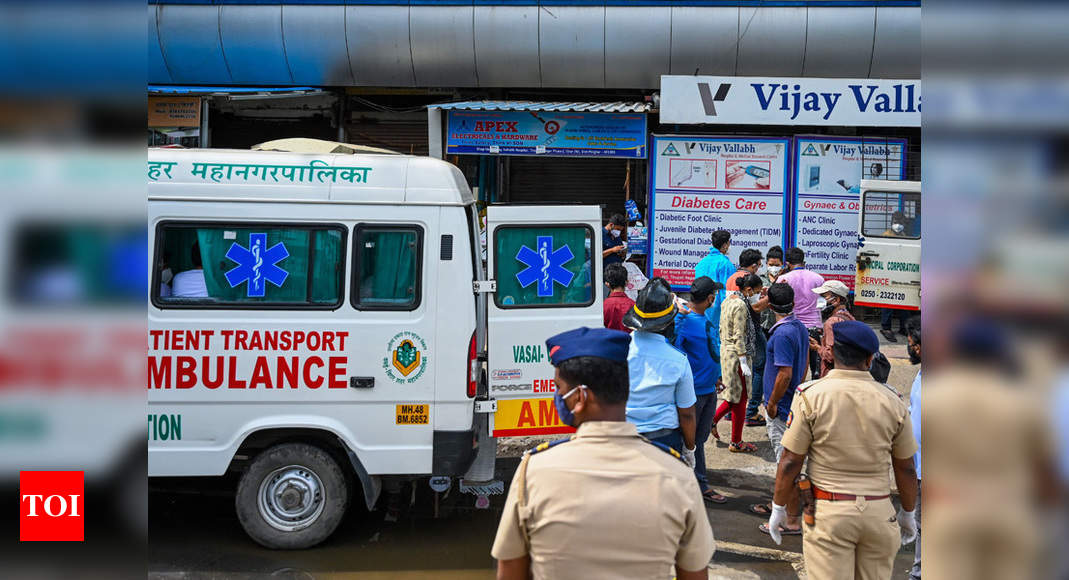India's COVID-19 Crisis: A Statistical Mystery
Introduction: India's experience with the COVID-19 pandemic remains a complex and, in some ways, statistically puzzling narrative. While the initial waves saw alarming case numbers, the official figures subsequently diverged significantly from other global trends, leading to ongoing debate and uncertainty regarding the true extent of the crisis. This article delves into the statistical inconsistencies, exploring potential explanations and their implications for public health strategies.
The Statistical Discrepancy: A Closer Look
The official COVID-19 death toll in India, while substantial, has been consistently questioned by experts. Several factors contribute to this skepticism:
-
Underreporting: Many believe a significant underreporting of cases and deaths occurred, particularly during the devastating Delta variant surge in 2021. Reasons cited include limited testing capacity in certain regions, challenges in accurately recording deaths, and a possible reluctance to officially report COVID-19 as the cause of death.
-
Excess Mortality Data: Studies examining excess mortality—the difference between observed deaths and expected deaths based on historical trends—suggest a far higher death toll than officially reported. This discrepancy highlights the limitations of relying solely on official COVID-19 death counts. The Lancet published a significant study on this topic, revealing a substantially larger death toll than government figures indicated. [Link to Lancet study]
-
Data Collection Challenges: India's diverse population and vast geographical expanse present unique data collection challenges. Variations in healthcare infrastructure and reporting practices across states further complicate the picture, making it difficult to obtain a truly comprehensive national dataset.
The Role of Seroprevalence Studies
Seroprevalence studies, which measure the percentage of a population with antibodies to a virus, offer an alternative way to estimate the true extent of the infection. While these studies provide valuable insights, they too face limitations in terms of accuracy and representativeness. However, they do indicate a likely higher level of infection than official figures suggest.
Potential Explanations and Their Implications
The discrepancies in India's COVID-19 statistics are multifaceted and warrant further investigation. Potential contributing factors include:
-
Population Density and Mobility: India's high population density and significant internal migration likely facilitated rapid viral transmission, making accurate tracking extremely difficult.
-
Healthcare Infrastructure: Uneven access to healthcare across the country impacted both testing and treatment, contributing to underreporting. [Link to article on India's healthcare infrastructure]
-
Data Transparency: Improved data transparency and better reporting mechanisms are crucial for a more accurate understanding of past and future outbreaks.
Moving Forward: Lessons Learned and Future Preparedness
The statistical ambiguities surrounding India's COVID-19 crisis highlight the importance of robust surveillance systems and reliable data collection practices. Key lessons learned include:
-
Investment in Healthcare Infrastructure: Strengthening healthcare infrastructure, particularly in rural areas, is critical for effective pandemic response.
-
Data Transparency and Collaboration: Open data sharing and collaboration among researchers, government agencies, and international organizations are crucial.
-
Strengthening Public Health Systems: Investment in public health infrastructure and disease surveillance is essential for preparedness against future health emergencies.
Conclusion:
The statistical mystery surrounding India's COVID-19 crisis underscores the challenges of managing pandemics in a diverse and populous nation. While official figures provide a glimpse into the situation, a more complete understanding requires considering excess mortality data, seroprevalence studies, and the limitations of data collection in a complex setting. Addressing these challenges through improved infrastructure, data transparency, and stronger public health systems is vital for future pandemic preparedness.
Call to Action: What steps do you believe are necessary to improve data collection and reporting during future health crises? Share your thoughts in the comments below!
